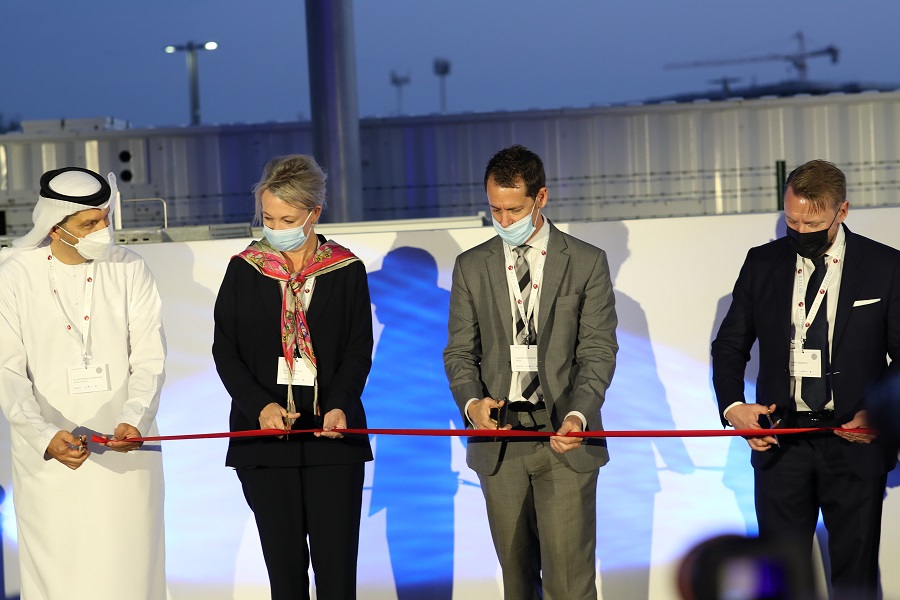
While climate change and carbon emission reductions are strong elements of global discourse today, attempts by cities, states and nations to switch to low-carbon energy technologies and practices are often hindered by cultural influences.
In a paper published in Nature Sustainability in May 2020, Dr. Steve Griffiths, Senior VP Research and Development and Professor of Practices at Khalifa University, and Dr. Benjamin Sovacool, Professor of Energy Policy at the Science Policy Research Unit (SPRU) at the University of Sussex School of Business, Management, and Economics, propose a framework for assessing the influence of culture on the adoption of low-carbon technologies and behavioral practices. They asked how insights about cultural influences can guide energy planners and policymakers who are trying to stimulate transitions, particularly at a time of rapid technological change. The paper specifically explores the cultural dimensions of four broad specific sustainability cases.
“Culture can complicate, or catalyze, efforts to promote more efficient, more sustainable, and often more affordable forms of mobility, as well as energy use in homes and buildings,” said Dr. Griffiths. “We looked at the evidence on low-carbon energy transitions and culture, leveraging data from energy and transport studies, as well as anthropology, area studies, political science, psychology and sociology.”
Using this approach, the authors explored how the cultural dynamics of low-carbon transitions are shaped not only by user practices, but also by the technologies and environments that co-exist and co-evolve with practices.
“This is particularly important when we consider radical technical innovations, such as autonomous vehicles, where the machine or technology itself takes on culturally determined behaviors,” explained Dr. Sovacool.
The authors propose a framework that relates modest and substantial changes in practices to incremental and radical technology innovations in order to investigate the range of influences that culture can have on efforts toward low-carbon transitions. The specific cases considered within this framework were the adoption of ridesharing, alongside automated vehicles, eco-driving, and whole-house retrofits.
“Although we treat our cases as distinct, there are factors that can connect them,” explained Dr. Griffiths. “This includes spillovers and social influence—adopters influencing non-adopters—and households that may adopt multiple innovations. Although we show that culture can affect the uptake of technology and that culture can mediate how technologies are designed, technology itself can also alter cultural attributes and cultural attributes can affect how technology is used.”
Perhaps the most obvious culturally-influenced behavior is driving. Eco-driving can be categorized into three types: strategic decisions such as vehicle selection, tactical decisions such as route planning, and operational decisions such as driving style.
“Culture has a significant positive relationship with eco-driving,” said Dr. Griffiths. “For instance, one study of the early adopters of the Toyota Prius found that owners were willing to pay a premium price for a non-luxury vehicle because it symbolized a green identity. Adopting a Prius allowed an owner to brand him or herself as a ‘prosocial’ individual. Follow-up work has confirmed that ‘eco cars’ have status and symbolic value across diverse contexts, and often marks the adopter as someone who is educated, informed, healthy, and environmentally focused.”
The authors also investigated the opposing side, finding that behaviors known as ‘aggressive driving’ have significant negative implications on energy use and run counter to eco-driving as a cultural norm. They noted that aggressive elements of driving may prevail in any location with strong cultures of masculinity, strength or aggression, with many studies suggesting drivers speed due to strong social pressure from peers.
At the opposite end of the scale from eco-driving, automated vehicles require a radical change in practice and very advanced technology to implement. The authors make clear that there are multiple sustainability benefits to automated vehicle adoption, but note there are various cultural factors that impact their adoption and their safety.
“The software in an automated vehicle contains artificial intelligence and machine learning algorithms that enable the vehicle to make real-time decisions based on the information it receives from sensors that perceive the environment around them,” explained Dr. Sovacool. “These algorithms are ‘trained’ to recognize and interpret this environment and then take actions that are ‘appropriate’ based on context. However, this training can result in unintended biases that are difficult to remedy and ultimately reflect varying degrees of racial, gender, or religious discrimination.”
Research shows that automated vehicles trained using machine-learning techniques are likely to have biases in detecting pedestrians based on skin tone, with better recognition performance for people with lighter skin tones, and pattern of dress, with better recognition performance for those in ‘Western’ clothing. Such machine biases can result in pedestrian injuries and even fatalities.
Other, albeit less dangerous, cultural differences affect the proliferation of ridesharing apps, particularly in the Middle East. Despite Uber dominating the Western market, it has not managed to translate its services to the local context, with local ridehailing companies growing into major businesses thanks to their cultural awareness.
In Saudi Arabia, Careem tailored its approach to the market by training drivers to follow cultural norms about not conversing with female passengers, which allowed them to tap into the large female population. Conversely, the norm across the Gulf Cooperation Council countries is private car ownership, with 97 percent of residents travelling predominantly by private car. A key aspect of the individualistic car ownership culture is the expression of class and wealth, which is a known cultural counter to the adoption of ridesharing.
“Rather than perhaps promoting Western or imported technologies for a particular region, programs could incentivize more locally designed, culturally acceptable, appropriate technology,” said Dr. Griffiths. “This preference for appropriate technology could push for technology that is designed, manufactured, and owned by stakeholders who better comprehend the cultural dynamics of the customers they are supposed to serve.”
Whole-house retrofits are recognized by the authors as a departure from the mobility theme but represent a case where entirely new configurations of technology are required but only modest changes in practice are needed. Whole-house retrofits focus on redesigning homes, especially for heating or cooling, to reduce their energy demand and to be more energy-efficient. This is often accomplished through the integration of multiple technologies, including fabric insulation, energy-efficient lighting, improved windows, and even integration with renewable energy.
“Australia has been credited for having a national ‘love affair’ with retrofits due to a ‘renovation culture’ that prioritizes style and aesthetics,” said Dr. Sovacool. “Many homes have implemented retrofits such as small-scale rooftop solar panels because they are seen as more modern, and overall more beautiful. Additionally, the property becomes more valuable. These positive cultural dynamics contrast with the negative dynamics apparent in Ireland, England and Japan, where retrofits are often abandoned or discouraged due to notions of aesthetics and cultural heritage standing in the way of retrofits.”
The authors stressed that policy interventions related to cultural awareness about sustainability are important, with a cultural perspective needed for sustainability transitions.
“Low-carbon energy transitions are not only based on techno-economic dimensions and considerations,” said Dr. Griffiths.
“Rather, they are shaped—in positive and negative ways—significantly by culture. Of particular importance, researchers in recent years have come to understand the critical importance of adopting social science perspectives in both energy and artificial intelligence research. Now is the time to leverage this clarity and bring together interdisciplinary research efforts to ensure that low-carbon transitions are helped, and not hindered, by the embodiment of culture as we seek to decarbonize our future homes, communities and countries.”
Jade Sterling
News and Features Writer
21 May 2020






